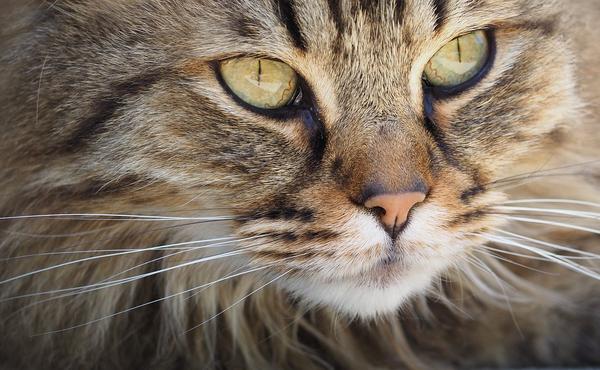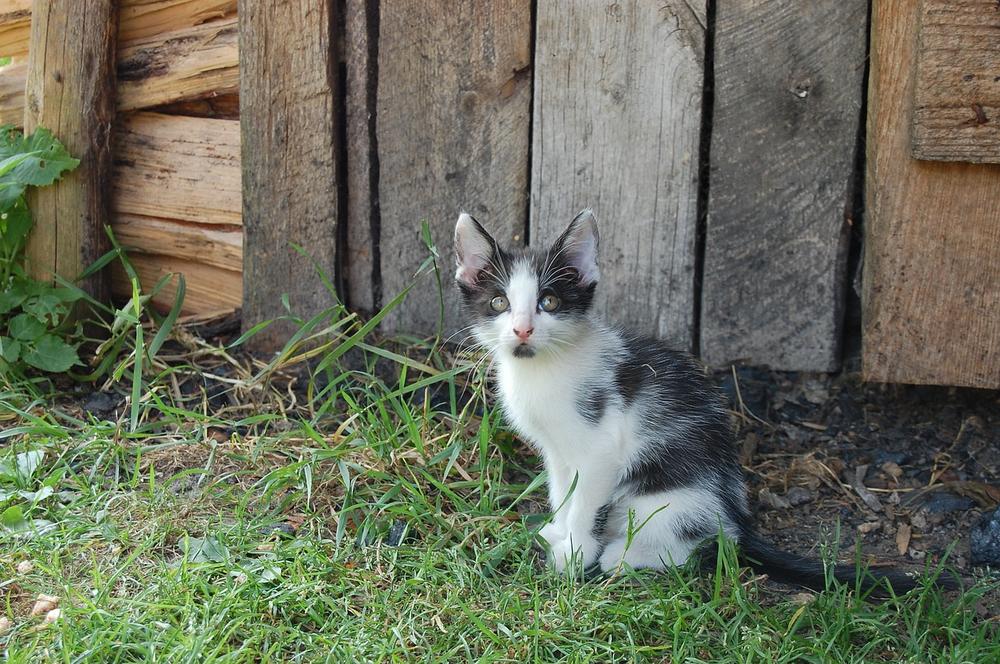How Long Can A Cat Survive Locked In A Shed?

Locked in a shed, alone and confined, how long would your feline friend survive?
An ominous question, I know.
But hey, I get it.
Your cat's safety is paramount, and the anxiety creeps in like a stealthy predator.🐾
You might think, "Will my beloved furry companion escape unscathed?"
Let me tell you.
I understand your worry.
So, let's delve into this matter, explore the depths of shed survival, and put your mind at ease.
Buckle up, because we're diving in headfirst.
Let's begin.
Long-Term Effects of Being Locked in a Shed
Cats locked in sheds can develop serious health issues
When you lock a cat in a shed for a long time, it can really harm their health.
The poor ventilation and exposure to dust, allergens, and irritants can mess with their breathing, making it hard for them.
Imagine being surrounded by all that stuffiness and struggling to catch your breath... That's not exactly the perfect situation, is it?
But wait, there's more!
If you keep a cat locked in a shed, they might also suffer from not having enough food.
Sure, they can survive without eating for a week or two as long as they have water, but if they go without food for too long, it can lead to starvation, emotional damage, and messed up behavior.
Trust me, a cat feeling anxious or depressed is not a happy cat!
And that's not even the worst part.

The lack of oxygen in a shed can cause organ failure over time, which is terrible news for your furry friend. And if that wasn't enough, dehydration can lead to kidney failure and, eventually, death.
Let's not even discuss the consequences of hypothermia or heatstroke.
It's just not worth it!
With all these potential risks, it's obvious that you need to take good care of your cat and ensure they don't end up with irreparable damage.
Don't lock them away in a shed where their health and happiness are at risk.
They deserve so much better than that, don't you think?
Main points I'll expand upon further down this article:
- Act quickly when a cat goes missing and may be trapped in a shed.
- Factors like nutrition and health impact a cat's survival in a shed.
- Keep kittens and elderly cats out of sheds as they are more vulnerable.
- Insulated sheds offer better protection from extreme weather conditions.
- Regularly check sheds to ensure no cats are trapped inside.
- Provide essential resources like water to prevent dehydration.
- Acclimate cats to the outdoors before moving them to a shed.
- Seek veterinary assistance for your cat's health and wellbeing.
- Medications should not be abruptly stopped without consulting a vet.
- Can't rescue your cat? Seek professional assistance and veterinary care.
And it gets worse...
Leaving a cat locked in a shed for an extended period could have long-lasting effects on their emotional well-being.
But what can you do if your beloved feline goes missing or becomes trapped?
Taking immediate action is crucial, and I've got some important advice to share with you...
The Importance of Immediate Action
When your cat goes missing or gets trapped, you must act quickly to avoid emotional harm like anxiety or depression-related behavioral issues.
To minimize the risk, start by thoroughly searching the surrounding area. Call out for your beloved feline.

Inspect for any signs of scratching that may indicate their whereabouts.
And if necessary, entice them with food and water to lure them out.
In situations like these, don't hesitate to reach out to animal control or a local rescue organization.
Time is of the essence, my friend, so never assume that friendly neighbors alone will do the trick.
Factors That Impact a Cat's Survival in a Shed

The survival of a cat in a shed can be influenced by various factors.
- Shed size: A larger shed provides more space for exploration, reducing boredom and stress-related behaviors.
- Nutrition and health: Cats need access to food and water to survive, with kittens, elderly cats, and those with ailments at higher risk of dehydration. Good nutrition is essential for a strong immune system, but being overweight can lead to liver issues.
- Environmental conditions: The temperature, cleanliness, ventilation, and humidity levels inside the shed can impact a cat's chances of survival.
- Behavior and habits: Cats use their sense of smell to navigate and search for prey in sheds. They are curious and may even try to find mates.
- Age, health condition, activity level: These factors, along with size/weight, affect a cat's ability to survive in a shed. Larger cats tend to have more body fat and muscle mass, giving them an advantage.
Identifying the Risks of Keeping Cats in Sheds
- If you keep your cats in sheds, they could be exposed to dangerous stuff like pesticides and chemicals that could seriously mess up their health if they accidentally eat or breathe them.
- Baby kittens and old cats can't handle changes in their environment as well as others, so it's probably not a good idea to put them in sheds.
- If you want more room for your cats or if they love being outside, having a shed can be helpful - but make sure you take precautions to keep them safe.
- Sometimes, when cats are feeling stressed or sick, they might hide out in sheds, so always check before locking up to make sure none of your furry friends are trapped in there.
- Sheds that have good insulation do a better job protecting your cats from crazy weather conditions which could leave them dehydrated or suffering from heat stroke.
- Don't think of sheds as a permanent home for your cats because they run the risk of getting stuck, starving, dehydrating, and having other health problems.
- It's important to regularly check your sheds to make sure no animals, including your cats, are stuck inside and desperate for a way out.
- Keep an eye on your cats to stop them from climbing too high and finding themselves in some dangerous situation they can't get out of.
- Take as many precautions as necessary to keep your cats from ending up stuck in sheds or small spaces - their well-being should always come first.
- If your cat goes missing, don't forget to look in sheds, garages, and any other places where they might have accidentally gotten trapped.
To truly ensure the well-being of your beloved feline friends, keeping them safe from the risks mentioned above is absolutely crucial.
That's why I highly recommend checking out my article on How Long Can a Cat Go Without Water. In this expert guide, you'll find valuable information to address your concerns and keep your cats healthy and hydrated.
Providing Essential Resources for Survival
To keep your cat healthy and happy in a shed, make sure to follow these practical tips:
- Keep them hydrated: Cats need plenty of water and chicken broth to prevent kidney damage from dehydration.
- Make it cozy: Set up shelves, blankets, beds, and hiding spots in the shed to create a comfortable environment for your cat.
- Control the temperature: Good ventilation and temperature regulation are important for their survival.
- Provide feeding and watering stations: Gradually introduce food and water in the shed to support their sustenance.
- Consider their health and activity levels: Every cat is different, so adjust the amount of food and water based on their individual needs.
- Don't forget fresh water: Drinking water helps with digestion, regulates body temperature, and assists in waste elimination.
Providing these essential resources is crucial for your cat's health and survival in a shed. 🐱
Now, you might be wondering, what steps can you take if your cat's health deteriorates while locked in a shed?
The next section will provide crucial information on seeking veterinary assistance and the potential risks associated with prolonged dehydration.
You have to know how to handle these situations to ensure your cat's well-being...
The Vital Role of Veterinary Care in Cat Rescue and Recovery
When you're rescuing and trying to help a cat, making sure they get veterinary care is really important.
Here are 10 reasons why it's so crucial:
- You need the veterinarian to check what kind of diet is best for the cat to be healthy.
- They'll assess any specific health issues and adjust the food accordingly.
- Suddenly stopping medication can cause withdrawal symptoms, but a vet can prevent that.
- Kittens and older cats need fluids through an IV to stay hydrated, and the vet can do that.
- If the rescued cat won't eat or drink, you want a vet to give immediate attention.
- Sometimes force-feeding is necessary to make sure the cat gets the nutrition they need - a vet can do that too.
- Severe dehydration needs to be dealt with quickly by a professional vet.
- For severe cases, the recovery process can take days or even weeks, according to the vet.
- If you're having trouble finding or rescuing your cat, it's time to ask a professional for help.
- Cats trapped without water need immediate veterinary care to avoid damage to their insides.
Making sure you work closely with a veterinarian is absolutely essential when you're trying to rescue a cat and ensure they have the best chance at getting better and staying healthy.
So don't hesitate to reach out to a pro for help - it's all about keeping your furry friend safe and helping them recover. 💪
And that wraps up today's article.
If you wish to read more of my useful articles, I recommend you check out some of these: When to Put Your Cat Down the Complete Checklist, How to Deal With Regret and Grief After Putting Cat to Sleep, Did I Put My Cat to Sleep Too Soon, Why Is My Cats Nose Cold, and Cat Purring Effect on Humans
Talk soon,
-Sarah Davis